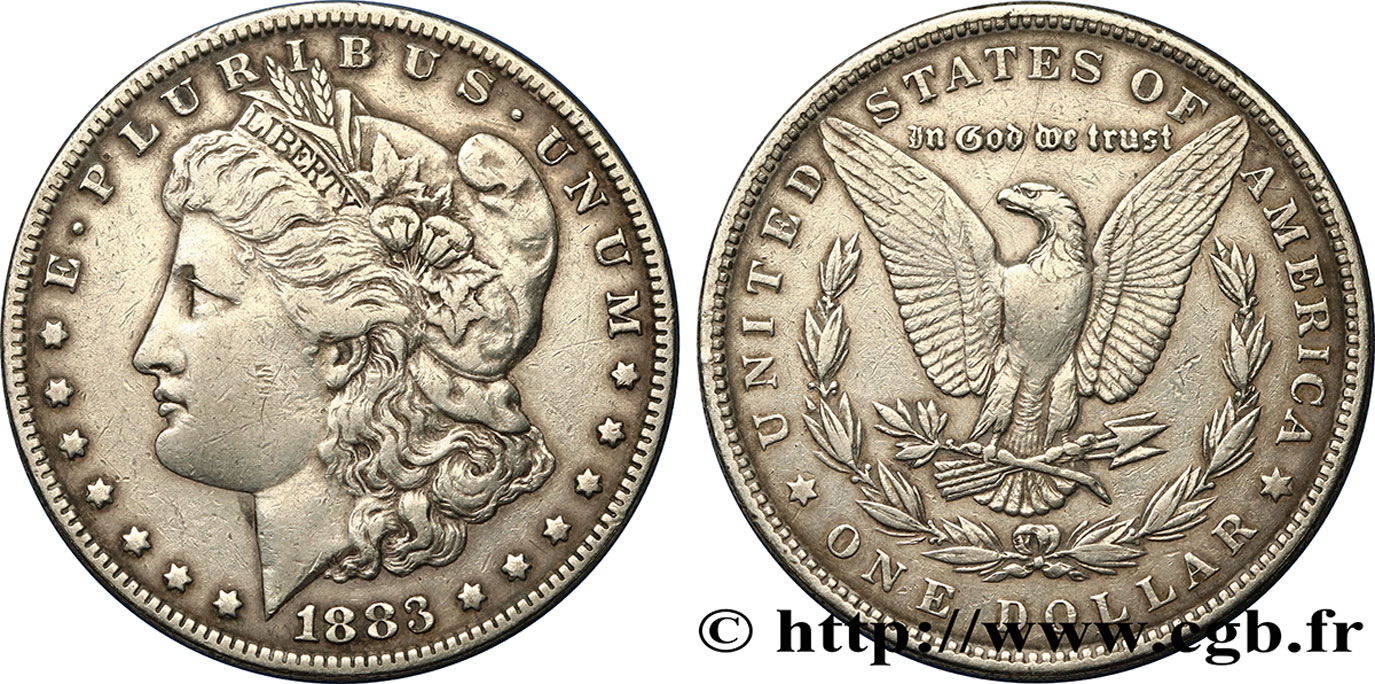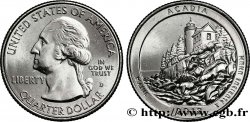fwo_410549 - ESTADOS UNIDOS DE AMÉRICA 1 Dollar type Morgan 1883 Philadelphie
No disponible.
Artículo vendido en nuestra tienda (2016)
Precio : 45.00 €
Artículo vendido en nuestra tienda (2016)
Precio : 45.00 €
Tipo : 1 Dollar type Morgan
Fecha: 1883
Nombre del taller / ciudad: Philadelphie
Cantidad acuñada: 12291000
Metal: plata
Milésimas de pureza : 900 ‰
Diámetro: 38,10 mm
Eje de acuñación: 6 h.
Peso: 26,55 g.
Canto: cannelée
Anverso
Titulatura del anverso: E . PLURIBUS . UNUM // (DATE).
Descripción del anverso: tête à gauche de femme symbolisant la Liberté.
Reverso
Titulatura del reverso: UNITED - STATES OF - AMERICA // * ONE DOLLAR *.
Descripción del reverso: aigle aux ailles déployées tenant une branche d’olivier et deux flèches ; couronne de laurier et motto “In God we trust”.
Comentario
En 1873, le « Fourth Coinage act » met fin au bimétallisme et les monnaies en argent sont démonétisées. Cependant dès 1876, de nombreux projets de lois sont proposés afin de réintroduire des dollars en argent. En 1878, Rutherford B. Hayes tente en vain de faire véto au «Bland-Allison Act » au Congrès. Dans cette optique, dès 1876, Henry Linderman, directeur de l'US Mint demande alors à C.W. Fremantle, deputy master de la Royal Mint de Londres, de lui trouver un graveur de coin de premier rang. Ce sera Charles T. Morgan (1845-1925) qui devient assistant graveur auprès du graveur en chef William Barber. Dès 1877, Morgan travaille sur des essais monétaires et prépare son projet de dollar argent. Ainsi en 1878, seulement une semaine après le passage de la loi, l'atelier de Philadelphie frappe des dollars dits « Morgan ». Charles Morgan succèdera à Charles E. Barber (fils de William Barber) en 1917.
In 1873, the Fourth Coinage Act ended bimetallism and silver coins were demonetized. However, by 1876, numerous bills were proposed to reintroduce silver dollars. In 1878, Rutherford B. Hayes tried unsuccessfully to veto the Bland-Allison Act in Congress. With this in mind, in 1876, Henry Linderman, director of the US Mint, asked C.W. Fremantle, deputy master of the Royal Mint in London, to find him a top-ranking die engraver. Charles T. Morgan (1845-1925) became assistant engraver to Chief Engraver William Barber. By 1877, Morgan was working on coin trials and preparing his silver dollar project. Thus, in 1878, just one week after the law's passage, the Philadelphia mint struck so-called \\\"Morgan\\\" dollars. Charles Morgan succeeded Charles E. Barber (son of William Barber) in 1917
In 1873, the Fourth Coinage Act ended bimetallism and silver coins were demonetized. However, by 1876, numerous bills were proposed to reintroduce silver dollars. In 1878, Rutherford B. Hayes tried unsuccessfully to veto the Bland-Allison Act in Congress. With this in mind, in 1876, Henry Linderman, director of the US Mint, asked C.W. Fremantle, deputy master of the Royal Mint in London, to find him a top-ranking die engraver. Charles T. Morgan (1845-1925) became assistant engraver to Chief Engraver William Barber. By 1877, Morgan was working on coin trials and preparing his silver dollar project. Thus, in 1878, just one week after the law's passage, the Philadelphia mint struck so-called \\\"Morgan\\\" dollars. Charles Morgan succeeded Charles E. Barber (son of William Barber) in 1917








 Informar de un error
Informar de un error Imprimir la página
Imprimir la página Comparte mi selección
Comparte mi selección Haz una pregunta
Haz una pregunta Consignar / vender
Consignar / vender
 Descriptivo
Descriptivo










